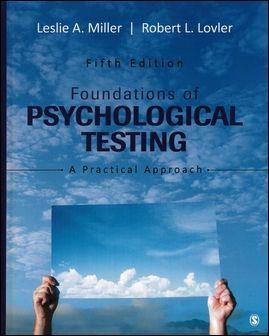書籍分類

Foundations of Psychological Testing: A Practical Approach 5/e (H)
作者:Leslie A. Miller, Robert L. Lovler
原價:NT$ 1,740
ISBN:9781483369259
版次:5
年份:2016
出版商:SAGE Publications
頁數/規格:640頁/精裝雙色
參考網頁:Foundations of Psychological Testing: A Practical Approach 5/e
版次:5
年份:2016
出版商:SAGE Publications
頁數/規格:640頁/精裝雙色
參考網頁:Foundations of Psychological Testing: A Practical Approach 5/e
內容介紹 本書特色 目錄 作者介紹
- Description
Offering a clear introduction to the basics of psychological testing as well as to psychometrics and statistics, this practical book includes discussion of foundational concepts and issues, using real-life examples and situations students will easily recognize, relate to, and find interesting. A variety of pedagogical tools further the conceptual understanding needed for effective use of tests and test scores. Now aligned with the 2014 Standards for Educational and Psychological Testing, the Fifth Edition offers new and expanded content throughout.







